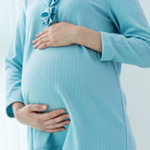We don’t hear this clinical question so often but it does come up from time to time. While the anticonvulsant oxcarbazepine (Trileptal) was initially promoted as a mood stabilizer for patients with bipolar disorder, it is not widely used in this setting, which may stem from the limited data supporting its efficacy in this patient population. However, we do see women who are taking this oxcarbazepine and ask about the reproductive safety of this medication.
What Information Do We Have?
A Cochrane Database Review published in 2016 included four studies and a total of 238 children exposed to oxcarbazepine monotherapy during pregnancy. The prevalence of major malformations in children exposed to oxcarbazepine was 2.39%, which is similar to that observed in non-exposed children (3·0%).
Looking at data from EURAP, an international registry for antiepileptic drugs and pregnancy, Tomson and colleagues identified 10 children (3·0%) with major malformations out of 333 with exposure to oxcarbazepine during pregnancy.
If we combine these two studies, this would give us a total of 571 exposures and a 2.8% estimated prevalence of malformations in exposed children, and this is consistent with what we typically see in children with no known exposure to teratogens. While these preliminary findings are certainly reassuring, the number of exposed children included in this analysis is still on the low side. In order to identify a twofold increase in risk for relatively common malformations, such as cardiovascular defects, we need to analyze about 600-800 exposures. So when it comes to oxcarbazepine, we still have a ways to go.
We have much less data on the long term effects of exposure to oxcarbazepine. This data was analyzed in a recent article from Veroniki and colleagues. Including data from a total of 5 cohort studies which included 2551 children, they observed that oxcarbazepine was associated with an increased risk of autism (OR 13.51, CrI 1.28 to 221.40). The authors note that it is difficult to interpret this data, given the very wide confidence interval, which most likely reflects considerable variability across the studies included in this analysis.
Clinical Implications
The data we have thus far on oxcarbazepine suggests that it does not carry the teratogenic risk of other anticonvulsants, such as valproic acid (Depakote); however, the information we have for oxcarbazepine is less robust than what we have for other medications, such as lamotrigine (Lamictal). In general, we prefer to use the medications for which we have the most data. When considering this particular clinical situation, the following questions may be helpful:
Why is oxcarbazepine being used? As a mood stabilizer? To treat anxiety? For sleep? We often see patients who are taking multiple psychotropic medications, and the first goal should be to determine how the various medications are being used. Could one medication be used to manage multiple symptoms?
Are there other effective alternatives? If oxcarbazepine is being used as a mood stabilizer, has this patient responded to lamotrigine? While prenatal exposure to lithium has been associated with a small increase in risk of cardiovascular malformations, it is a more robust mood stabilizer than oxcarbazepine and might be a better option for some women in this setting.
If the patient is using oxcarbazepine in conjunction with another mood stabilizer, would it be possible to slowly taper and discontinue oxcarbazepine and maximize the dosage of the other mood stabilizer?
Would it be reasonable to consider maintaining treatment with oxcarbazepine during pregnancy? There are often settings where the best option for a particular patient may be to maintain treatment with a particular medication in the absence of adequate reproductive safety data. This may be a situation where the patient has not responded to other similar medications or when the risks associated with recurrent symptoms which may emerge in the setting of medication discontinuation are too high.
Collecting Data on the Safety of Anticonvulsant Medications
The North American AED Pregnancy Registry was established in 1997 for pregnant women in the United States and Canada at the Massachusetts General Hospital. The purpose of the registry is to obtain and publish information on the frequency of major malformations among infants whose mothers have taken one or more AEDs during pregnancy. Pregnant patients taking anticonvulsants may call the registry TOLL FREE at 888-233-2334 to enroll in The North American AED (Antiepileptic Drug) Pregnancy Registry.
Ruta Nonacs, MD PhD
Andrade C. Major Congenital Malformations Associated With Exposure to Antiepileptic Drugs During Pregnancy. J Clin Psychiatry. 2018 Jul 17;79(4).
Tomson T, Battino D, Bonizzoni E, et al; EURAP Study Group. Comparative risk of major congenital malformations with eight different antiepileptic drugs: a prospective cohort study of the EURAP registry. Lancet Neurol. 2018;17(6):530–538.
Weston J, Bromley R, Jackson CF, Adab N, Clayton-Smith J, Greenhalgh J, Hounsome J, McKay AJ, Tudur Smith C, Marson AG. Monotherapy treatment of epilepsy in pregnancy: congenital malformation outcomes in the child. Cochrane Database Syst Rev. 2016 Nov 7;11:CD010224.
Veroniki AA, Rios P, Cogo E, Straus SE, Finkelstein Y, Kealey R, Reynen E, Soobiah C, Thavorn K, Hutton B, Hemmelgarn BR, Yazdi F, D’Souza J, MacDonald H, Tricco AC. Comparative safety of antiepileptic drugs for neurological development in children exposed during pregnancy and breast feeding: a systematic review and network meta-analysis. BMJ Open. 2017 Jul 20;7. Free Article








Leave A Comment